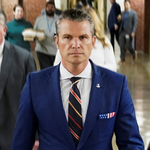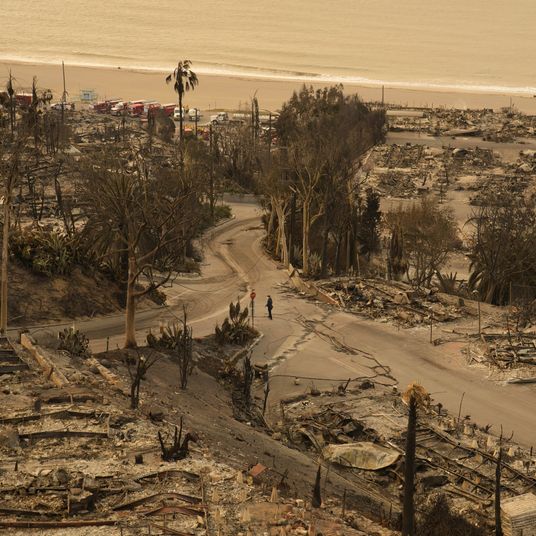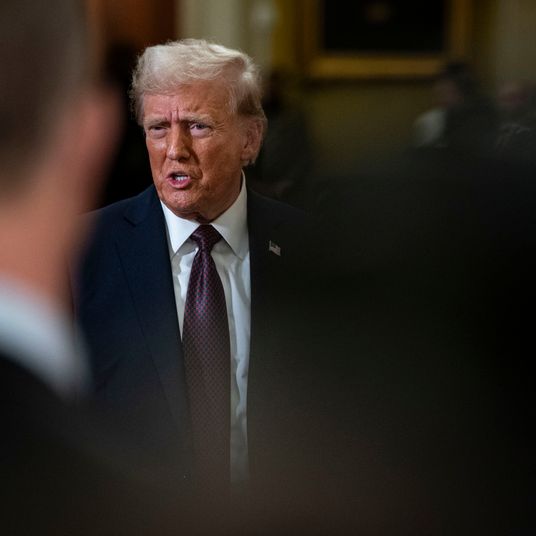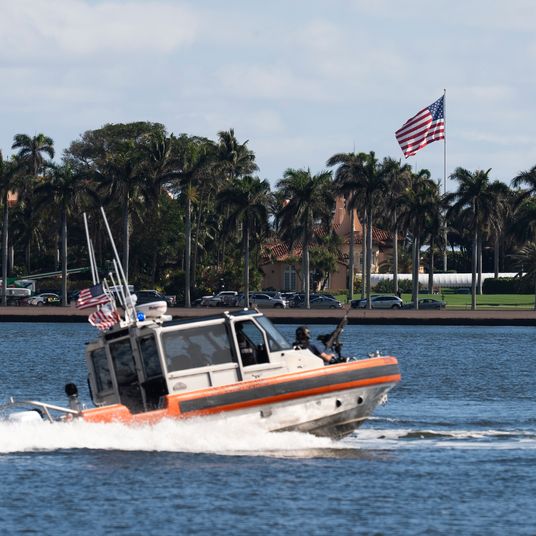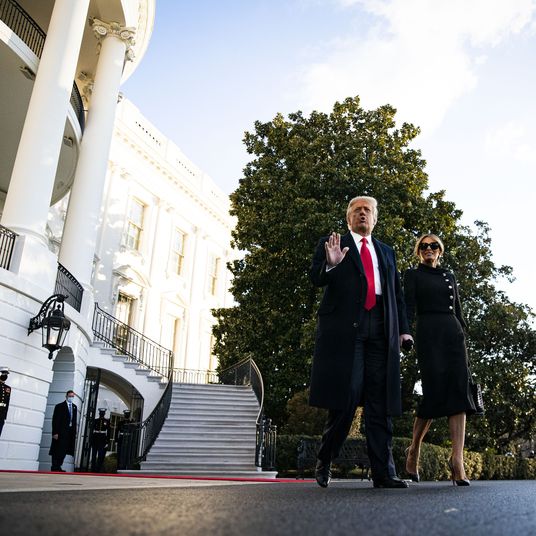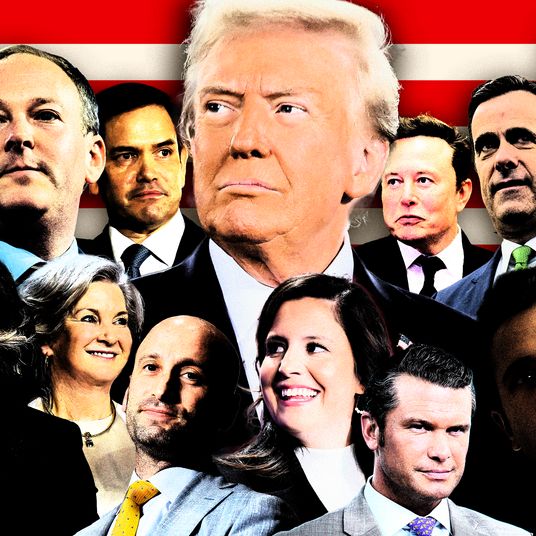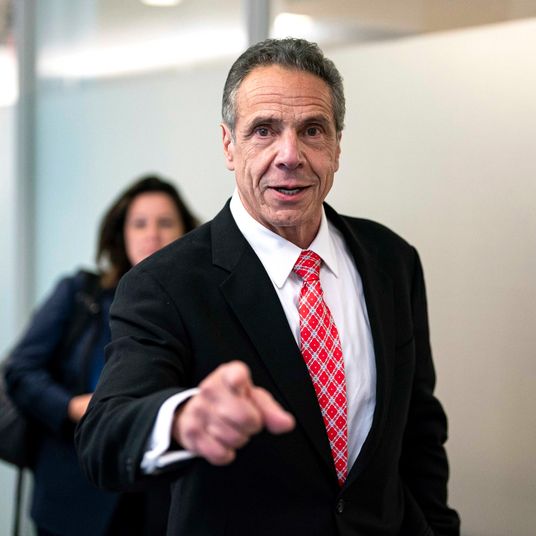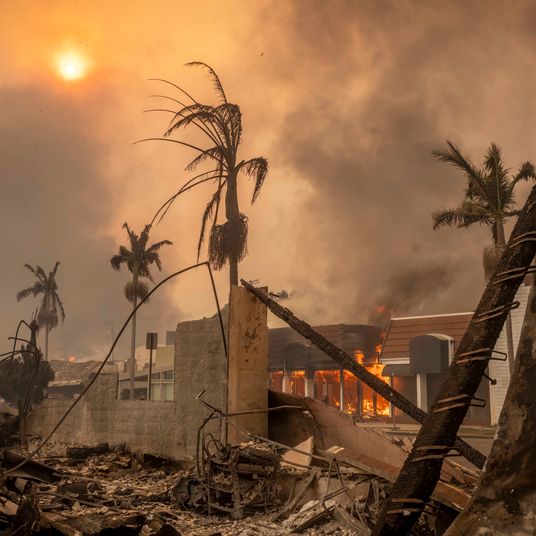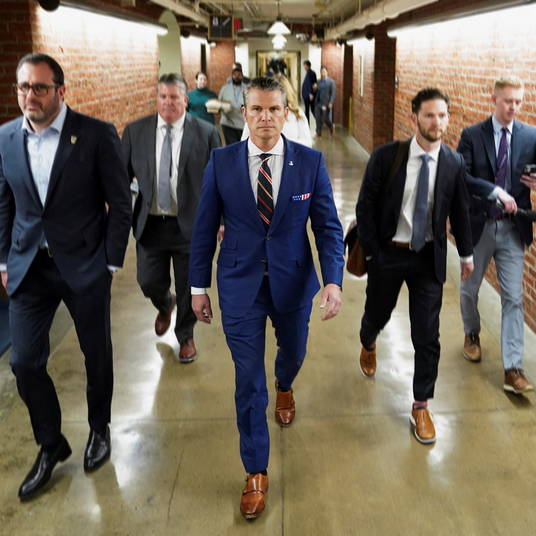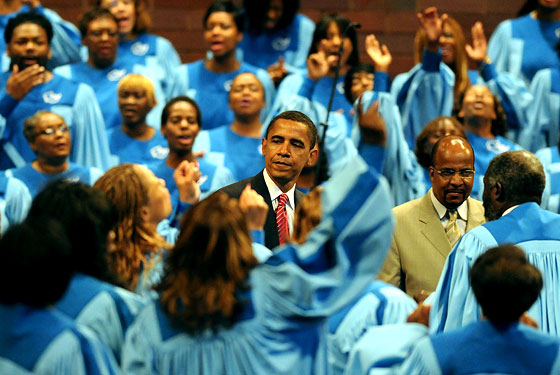
He might not even need God on his side.Photo: Getty
Heading into the summer, what’s most striking about the 2008 presidential race is that Barack Obama’s pledge to run a 50-state race was no feint; he appears to have meant it when he said he wanted to build a broad governing coalition.
It’s a Democratic year, and Obama’s got a ton of cash. He could spend the next four months camped out in Ohio, put Ed Rendell or Sam Nunn on the ticket, and probably grind out a more successful rerun of the last two elections. That’s certainly what Hillary Clinton would have done.
But the places John Kerry carried in 2004 are Obama’s base this time around, not his ceiling. And Obama has decided to invest that money in contesting a wide swath of territories. His first national TV ad, “The Country I Love,” launched on June 19 in eighteen states, from Nevada to Wisconsin to North Carolina. In the past two weeks, Obama has talked about patriotism in Independence, Missouri, faith-based programs in Zanesville, Ohio, national service in Colorado Springs, Colorado, and black teenagers and education in Powder Springs, Georgia, generating not only national headlines about his supposed shift to the center, but also local news.
Obama is particularly confident about appealing to independents in the heartland, who are deeply sick of George W. Bush and who aren’t particularly racially polarized. In Iowa, Obama has maintained the operation that delivered him a game-changing win in the Democratic caucuses. And he has poured resources into Indiana, a normally deep-red state where Obama and McCain are even in recent polls. Win Iowa, campaign manager David Plouffe rather baldly told the Indianapolis Star last month, and “we’d only be eleven away from 270.” Yes, Indiana has eleven electoral votes.
Obama’s team also believes it can out-organize McCain in sparsely populated Big Sky states, just as it beat Clinton in the Democratic caucuses. Last week, Obama became the first presidential candidate to visit Fargo, North Dakota, since 1964. He spent the Fourth of July in Butte, Montana. He may even be planning a trip to Alaska. Polls show he is actually competitive in all three states.
So where is Obama looking to go over the top? Ohio? Florida? Iowa and Indiana? Virginia and Colorado, which have drifted Democratic while the GOP has played to its base over the past eight years? Southern states with large black populations where Obama is within single digits of McCain, such as North Carolina and Georgia? Until money gets tight, the answer is “all of the above.” Obama is on the air in all of those states. And right now, he’s north of 300 electoral votes.
In response, the McCain campaign has been spending heavily in the border-but-oughta-be-red states of Missouri and Virginia, and has even gone on the air in Mississippi, where polls put him far ahead. But until recently, the campaign was just driven by the candidate’s own impulses, not deep strategy. Some are now arguing that McCain’s best chance for 270 electoral votes is to hope certain events benefit the GOP while focusing on a few states where Obama is vulnerable. Last Monday, for example, the Next Right’s Patrick Ruffini wrote: “The key to victory may lie in targeting Ohio-Michigan as a megastate and trying to shift both states 1-2 points in his direction by brute force.” And McCain seems to agree, having dumped campaign manager Rick Davis for Karl Rove acolyte Steve Schmidt and launching a tour of Michigan, Minnesota, and Wisconsin. You can just smell a slash-and-burn campaign across the Rust Belt.
Of course, the national media, following the campaign as a personality-driven duel, views the race as a tie. (July 1, CNN reported a 50-45 Obama lead in a poll with a 3.5-point margin of error as a “statistical dead heat.”) And McCain knows just how many drops of blood will trigger frenzies over subjects like Wesley Clark’s remarks and Obama’s “flip-flops.” Obama, in contrast, is often knocked off stride by such unreasonableness, whether it’s debate questions about his patriotism or endless parsing of his intent to “refine” his Iraq policy.
Obama seems reactive partly because some of his key initiatives — registering massive numbers of new voters, reaching out to young Evangelicals — are happening off the press’ radar. But on some big issues, McCain has just made better pitches. He has framed the war as a question of whether the surge has brought added stability to Iraq, and Obama, unable to deny that it has, is stuck defending troop withdrawals. McCain has argued for offshore drilling as a way to use American resources for relief at the pump, and Obama’s responses have sounded retro and hackneyed. Meanwhile, Obama bungled the symbolism of rejecting public financing by letting McCain off the hook for agreeing to use public funds, then rejecting the system himself. And while Obama’s calls for faith-based programs and community service may prove resonant, his economic program has yet to viscerally connect with voters.
The key question: After Obama reintroduces himself as a non-radical, can he take control of the campaign narrative? During the last three months of the Democratic race, he simply ran out the clock against Clinton. Against a more unpredictable opponent and facing a possible October surprise, Obama will need better punches for a knockout.
Intrade currently puts Obama’s chances of winning at 64.9 percent and McCain’s at 31.2 percent. The funny thing about that is that between the overconfidence of some and the anxiety of others, Obama’s supporters are probably less comfortable than McCain’s with those odds. —Peter Keating


